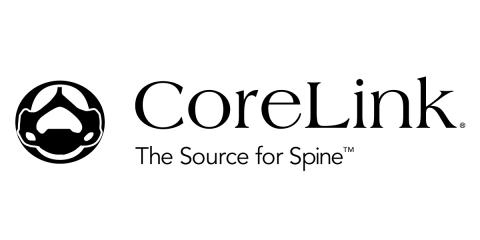 For those who have not heard of CoreLink, CoreLink LLC designs and manufactures spinal implants systems and collaborates with its surgeons to improve the quality of life of their patients.
For those who have not heard of CoreLink, CoreLink LLC designs and manufactures spinal implants systems and collaborates with its surgeons to improve the quality of life of their patients.
Many companies, other than CoreLink, also known as The Source for Spine™, have dedicated themselves or have even lent a hand to the medical sector, more specifically, the spinal cord activity, with their additive manufacturing expertise. More recently, EIT was granted approval for their 3D printed cervical cage. Prior to this, Medicrea was able to acquire 3 patents to develop 3D Printed Titanium Interbody devices. CoreLink has now managed to contribute to this activity with its recent commercial release of its Foundation 3D Interbody Cage Systems for cervical and lumbar fusions.
Foundation 3D Interbody Cage Systems
The characteristics of the human body’s natural bone will be mimicked by Mimetic Metal™ technology, which was manufactured by the titanium device with the use of 3D printing. Much excitement is brewing about the latest advancement due to the machinery. CoreLink’s CEO, Jay Bartling, confirms “We are excited about F3D, because of the significant improvement in patient care expected.”
 The lumbar device is designed to provide balance between strength, stiffness and stability. CoreLink minimizes implant density with this device, thus providing good imaging characteristics. Neurosurgeon in Slidell, LA, Justin Owen M.D. states “I love how these cages image, both intraoperative and post op, without the typical hardware-associated artifacts we are used to with metal cages … I appreciate the possibility of the endplates growing around the porous metal surfaces, which would seem to provide faster stabilization towards fusion before growing across the entire disc space. This is a great system, for me and my patients.”
The lumbar device is designed to provide balance between strength, stiffness and stability. CoreLink minimizes implant density with this device, thus providing good imaging characteristics. Neurosurgeon in Slidell, LA, Justin Owen M.D. states “I love how these cages image, both intraoperative and post op, without the typical hardware-associated artifacts we are used to with metal cages … I appreciate the possibility of the endplates growing around the porous metal surfaces, which would seem to provide faster stabilization towards fusion before growing across the entire disc space. This is a great system, for me and my patients.”
Internal testing of this product reveals that the Straight Foundation 3D Lumbar interbody can reduce stress shielding as a result of its modulus of elasticity being less than peek. Such an advantage is beneficial as it enables Wolff’s Law by: the interface with the vertebral endplates, the central graft column, and inside the walls of the device itself.
For further information about 3D Printing, follow us on our social networks and subscribe to our newsletter!
Would you like to be featured in the next issue of our digital magazine? Send us an email at contact@3dadept.com






